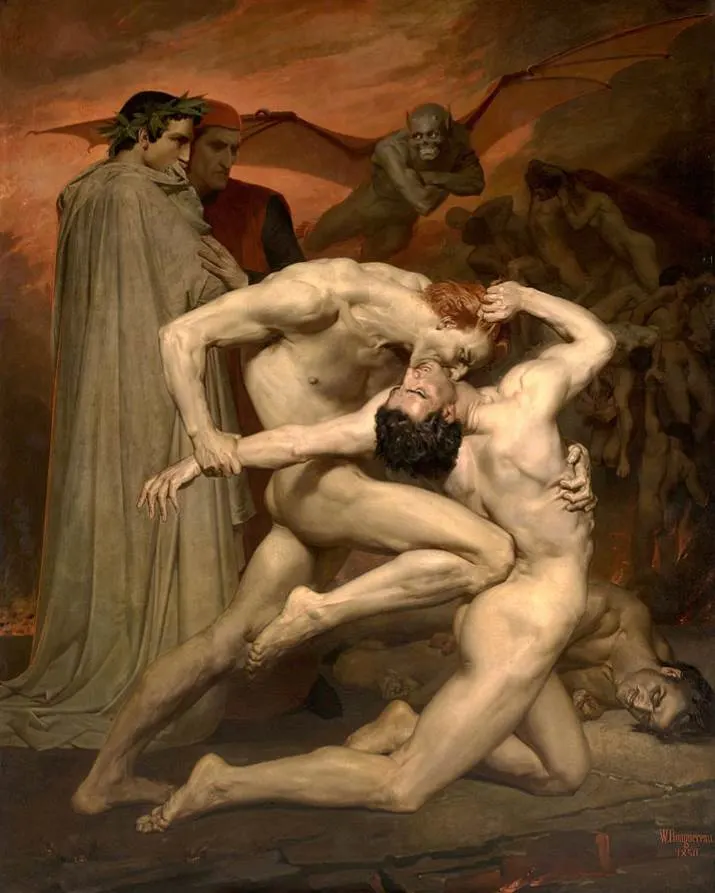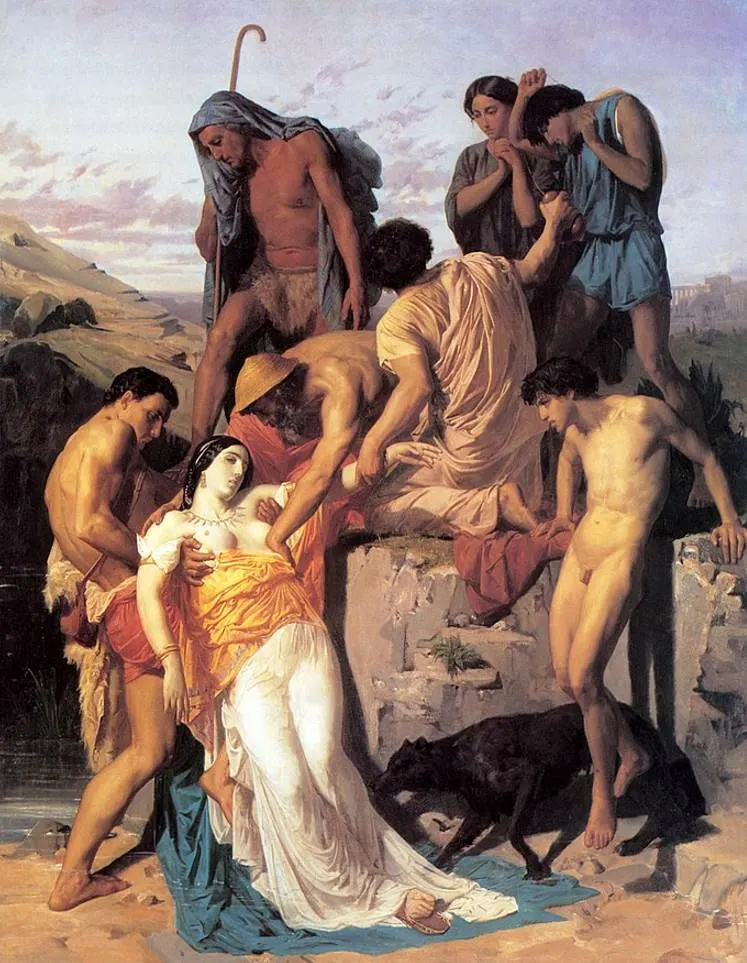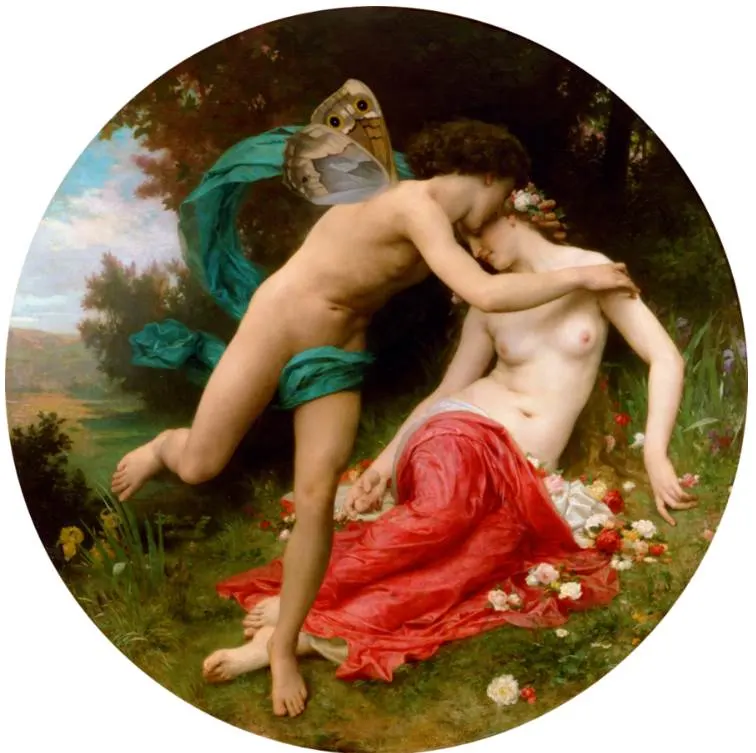The quality of artworks produced by this French painter is incredible and this was greatly appreciated at the height of his career in the late 19th century.
William-Adolphe Bouguereau (1825-1905) produced Neoclassical paintings that often featured mythological subjects, but he integrated a sense of realism that was unseen before.
He was the most famous Neoclassical painter at the annual Paris Salon at the height of his career. He is therefore considered to be the most important Academic painter of his generation.
His style clashed with the emerging Impressionist artists who revolutionized the world of art in the 1860s and 1870s. Bouguereau’s art completely fell out of favor at the turn of the century.
Saying that he was a prolific artist is an understatement. He completed 822 oil paintings, many of which were monumental in size. The whereabouts of many of these, however, remain unknown.
In this article, you’ll discover some of the most famous paintings by William-Adolphe Bouguereau.
1. Nymphs and Satyr
- Date created: 1873
- Dimensions: 260 × 180 centimeters (100 × 71 inches)
- Location: Clark Art Institute, Williamstown, Massachusetts, United States
Nymphs and Satyr is a large painting by William Adolphe Bouguereau that was exhibited at the Paris Salon in 1873. It depicts a group of nymphs, ancient Greek deities of nature, who are trying to pull another mythological creature that can’t swim, a satyr, into the water.
The painting was acquired by an American art collector named John Wolfe the year it was completed and he brought it back to the United States. It spent multiple decades in an American warehouse in the 20th century before being purchased by art collector and founder of the Clark Art Institute, Robert Sterling Clark, in 1942.

2. The Shepherdess
- Date created: 1889
- Dimensions: 158.75 × 93.35 centimeters (62.5 × 36.75 inches)
- Location: Philbrook Museum of Art, Tulsa, United States
The Shepherdess is a painting that is also known as “The Little Shepherdess” and is a work that depicts a young woman wearing the attire of a shepherd. The French title of the painting is “Pastourelle” and that’s a reference to the word in the southern French dialect.

Bouguereau had a fascination for shepherds because he produced several paintings of this subject, including an earlier version with the same title in 1881. The model in this work is also a recurring figure in Bouguereau’s oeuvre because she also posed for his other work titled “The Bohemian” (1890).

3. Dante and Virgil
- Date created: 1850
- Dimensions: 281 × 225 centimeters (111 × 89 inches)
- Location: Musée d’Orsay, Paris, France
Dante and Virgil is the title of a rather frightening painting by William Adolphe Bouguereau. It depicts a scene from Dante Alighieri’s “Divine Comedy,” a narrative poem that he wrote between 1308 and 1320. This poem was popular among Neoclassical artists of the 18th and 19th centuries.
This particular work shows Dante and his guide Virgil who are on their journey through hell. They are watching as a heretic named Capocchio is being bitten in the neck by a trickster Gianni Schicchi. The scene depicts the eternal combat and suffering that the two are going through.

4. Shepherds Find Zenobia on the Banks of the Araxes
- Date created: 1850
- Dimensions: 147 × 113 centimeters (58 x 44 inches)
- Location: École Nationale Supérieure des Beaux-Arts, Paris, France
Shepherds Find Zenobia on the Banks of the Araxes was a very important work in the oeuvre of the young William-Adolphe Bouguereau. For years he had tried to win the Grand Prix de Rome without luck. This was a contest that allowed the winner to study for several years in Rome.
Dante and Virgil didn’t make him win the contest and he didn’t win first prize with this painting as well. It did, however, earn him the second consolidation prize. He used the earnings from this prize to pay for a stay at the Villa Medici in Rome. This was a trip that had a definite influence on the artist’s future career.

5. The Birth of Venus
- Date created: 1879
- Dimensions: 300 × 218 centimeters (120 × 86 inches)
- Location: Musée d’Orsay, Paris, France
The Birth of Venus by Bouguereau is one of the many depictions of this popular story in Greek Mythology. The most famous version was painted by Sandro Botticelli and his Birth of Venus (the 1480s) is arguably one of the most famous Renaissance paintings in history.
As in most other Venus paintings, the Roman goddess is depicted as the idealized version of female beauty. Although the title suggests we see her actual birth, it depicts the scene in which she is transported from the sea to Paphos in Cyprus. Bouguereau’s painting very much resembles his idol Raphael’s painting “The Triumph of Galatea” (1512).

6. The Nut Gatherers
Date created: 1882
Dimensions: 87.6 x 134 centimeters (34.4 x 52.7 inches)
Location: Detroit Institute of Arts, Detroit, United States
The Nut Gatherers is a painting also referred to as “The Hazelnuts.” It depicts two innocent young girls who are sitting barefoot on the grass. They are enjoying the fact that they found quite a lot of delicious hazelnuts.
It’s an ode to both the innocence of children, which is stressed by the fact that they are barefoot, and enjoying the simple things in life before adulthood begins. This remarkable painting is one of the most popular attractions of the Detroit Institute of Art.

7. Flora and Zephyr
- Date created: 1875
- Dimensions: 185 centimeters (73 inches) in diameter
- Location: Musée des Beaux-Arts, Mulhouse, France
Flora and Zephyr is a circular painting by Bouguereau, also known as a tondo. It depicts Zephyr who was the Greek god of the west wind in Greek Mythology, who is kissing a nymph named Chloris. She is the Greek version of the better-known Roman goddess Flora.
The painting was exhibited at the Paris Salon of 1875 but it wasn’t sold during this event. It was subsequently displayed at the Mulhouse Salon of 1879 and acquired by the Société Industrielle de Mulhouse. This was the precursor of the Musée des Beaux-Arts de Mulhouse where the painting is on display today.

8. The Elder Sister
- Date created: 1869
- Dimensions: 130.2 × 97.2 centimeters (51.3 × 38.3 inches)
- Location: Museum of Fine Arts, Houston, United States
The Elder Sister is an even more adorable painting by Bouguereau that depicts a girl who is holding her baby brother in a rural landscape. What’s remarkable about his work is that the artist’s daughter Henriette and his son Paul served as models in this work.
The position of the children was closely examined and together with the rural landscape in the background, provides an idyllic feeling. The paint was acquired by the Museum of Fine Arts Houston in 1992 and has been an amazing attraction at the museum ever since.

9. A Dream of Spring
- Date created: 1901
- Dimensions: 190 × 130 centimeters (73 × 50 inches)
- Location: Indianapolis Museum of Art, Indianapolis, United States
A Dream of Spring is also known by its French title “Rêve de Printemps.” It’s an allegorical painting that depicts Spring as a young woman while she is surrounded by three Cupids.
The Cupids are crowing the young woman as Flora with a wreath of Spring Flowers. The painting was one of the final works in the oeuvre of Bouguereau, completed just 4 years after he passed away at the age of 79.

10. Les Oréades
- Date created: 1902
- Dimensions: 236 × 182 centimeters (93 × 72 inches)
- Location: Musée d’Orsay, Paris, France
Les Oréades was completed the year after A Dream of Spring and is one of the best-known works by the artist. It depicts a large number of nude females representing nymphs who are flying into the air. They are being watched by several satyrs, another mythological creature often used by the artist.
The painting’s title is a reference to the Oreads, mountain nymphs that were led by the goddess of the hunt, Artemis, one of the most popular of all ancient Greek goddesses. The fact that he completed this painting shows Bouguereau’s commitment to painting in the Neoclassical style, even though this type of art fell out of favor at the time.

